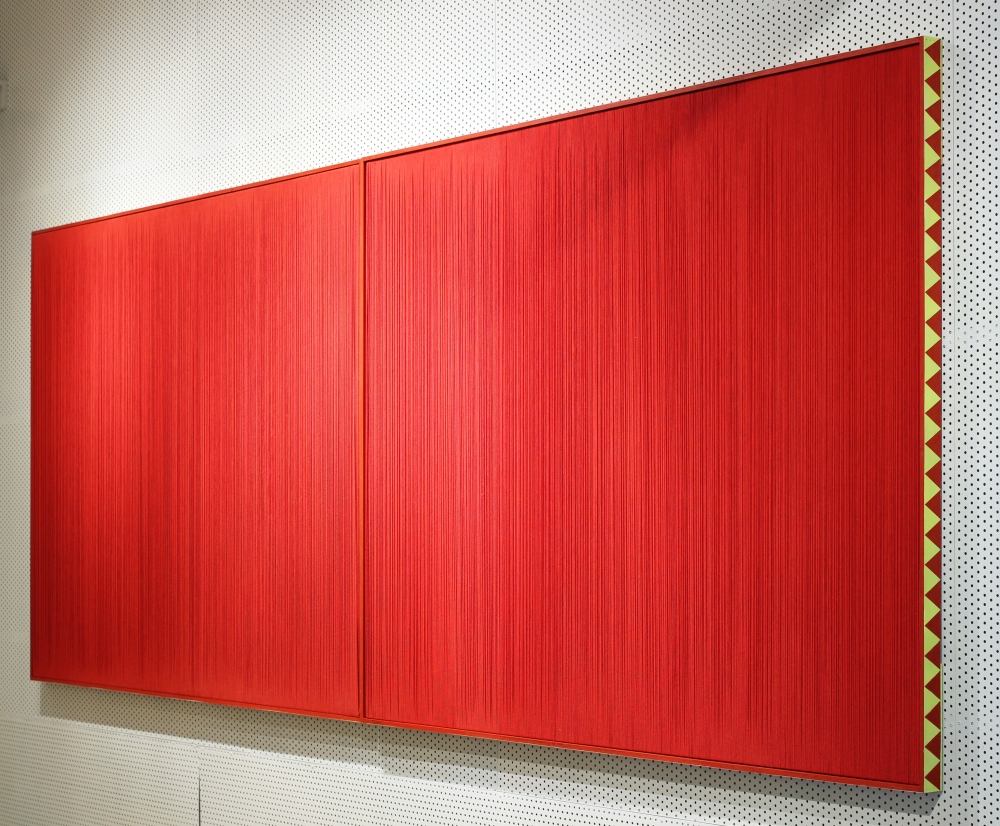사진안과 밖의 변증법 The Dialectics of Outside and Inside
 안과 밖의 변증법 The Dialectics of Outside and Inside 우드판넬, 뜨개실, 아크릴 물감 | 320x125cm | 2020
안과 밖의 변증법 The Dialectics of Outside and Inside 우드판넬, 뜨개실, 아크릴 물감 | 320x125cm | 2020
- 등록번호 : 2335
- 작가명 : 고동환
- 자료생성일 : 2020-10-23
- 분류 : 전시
- 태그 : 고동환
-
요약설명 :
전통적으로 장소, 공간의 개념은 안정된 개체이며 하나의 존재론적 경계로 정의되나 현대에 와서 과학의 발달은 공간의 개념을 무너뜨렸다. 물리적 공간은 비어 있는 것이 아니라 뒤섞인 물질들로 채워져 있으며 또한 안과 밖의 경계도 형상도 불분명 해졌다. 안(Inside)은 한계가 존재하는 닫힌 공간이며, 밖(Outside)은 경계가 없는 무한의 공간이라는 기존의 개념에서 안의 공간 또한 무한의 가능성을 가진 열린 공간이며 밖은 한없이 좁은 단칸방과 같은 공간이 될 수도 있다. 프랑스 철학자 가스통 바슐라르(Gaston Bachelard) 는 그의 저서 “공간의 시학(The Poetics of Space)”에서 안과 밖은 둘 다 내밀하며 언제나 서로 도치되고 서로의 적의를 교환할 준비가 되어 있기 때문에 어떤 밖 사이에 경계가 되는 면이 있다면 그 경계면은 양쪽으로 고통스러울 것이라 하였다. 이번 평면 작품에서 안과 밖의 정의는 이렇듯 경계가 불분명하고 불안정한 관계 속에 놓여 있다. 묘사가 돼야 할 캔버스 위에는 실을 반복적으로 감아 단순히 질감만을 표현하고 액자는 하나의 묘사의 공간으로 변화하여 캔버스를 구속하고 닫힌 공간이 아닌 확장하는 공간으로 표현되었다.
Traditionally, the concept of venue and space is a stable entity and it is defined as an existential boundary. However, the development of science in modern times has made the concept of space fall apart. Physical space is not an empty thing but it is filled with mixed materials. Also, boundary between inside and outside, and its shape became unclear. Inside is closed space with limits and outside is infinite space with no boundary. Under such existing concept, inside is also an open space with limitless possibilities and outside can be a space such as little single room. According to French philosopher Gaston Bachelard in his book, “the Poetics of Space,” inside and outside are close and they can be inverted at any time, and they are ready to exchange hostility. Therefore, if there is border-line surface between the two sides, there will be painful both sides. In this artwork on flat surface, the definition of inside and outside is within unclear and unstable concept. On the surface of canvas that is supposed to have description, thread is repeatedly reeled and only texture is simply expressed. And frame is transformed to a space for description and it is expressed as expanding space that is neither restrained, nor closed on the canvas.